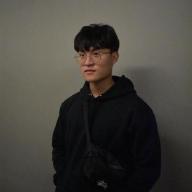About Appier#
Before the interview, I knew Appier as a “SaaS platform using AI for advertising and marketing.”
It certainly fits the data-intensive domain, especially working with vast, unbounded datasets.
The Backend team at Appier focuses on high-traffic, low-latency microservices.
I had previously interviewed for an Appier summer internship (after my first year of university).
This time, I applied for the Backend Summer Intern position on the AIXON product, for a 9 to 11-week internship.
Process#
- Applied through Greenhouse
- First round: Coding Interview
- Second round: Technical Interview
D+0: Resume Submission#
There was a Greenhouse link on LinkedIn where I submitted my resume.
I didn’t use LinkedIn’s one-click apply.
I submitted my resume on March 5th.
Since I had interviewed at Appier before, the HR reached out on March 9th, reminding me about this year’s summer internship opportunities.
The final deadline for resume submission was April 30th.
D+37: First Interview Request#
On April 11th, I received an invitation for the first interview.
I was asked to fill out my availability using a form similar to when2meet.
D+39: First Interview#
The first interview was scheduled on April 16th after confirming the time.
Depending on the team, there could be 2 to 4 engineers present for the interview.
In my case, two engineers conducted the interview.
The interview lasted about an hour, including self-introduction, Coding Interview, and questions about my experience.
The Coding Interview took around 30 minutes.
The difficulty wasn’t too high, but it involved interesting follow-up questions covering multiple aspects!
Afterward, they asked about the experiences listed on my resume, like:
“You mentioned optimizing XXX by XX%. Could you share more details on that?”
This year, the focus was on basic backend questions.
Last year, I was asked some scalability questions, but none came up this time.
D+49: Second Interview Request#
On April 26th, I was asked for my availability for the second interview.
D+53: Second Interview#
The second interview took place on April 30th with the team lead.
The interview began with a self-introduction.
Since I mentioned my experience at the TSMC Hackathon, a large portion of the discussion focused on the design, my responsibilities, and the challenges I faced during the project.
D+60: Third Interview Request#
On May 7th, I was asked for my availability for a third interview.
Due to certain reasons, the Data Engineering team also wanted to interview me, leading to an additional round.
Typically, the second interview is the final round.
D+62: Third Interview#
The third interview took place on May 9th.
Having already gone through two rounds, the third interview with the Data Team felt more like a team-matching process.
They asked about my expectations for the Summer Intern role and what I wanted to learn.
They also inquired about the details of my past experience, but the focus remained on backend development, with no questions from the Data Engineering domain.
There was also a brief system design question (one that could be completed in a few minutes).
I was relieved that they didn’t ask Data Engineering questions.
At that point, I had no experience in Data Engineering, only backend knowledge.
It wasn’t until the actual internship that I realized how deep the Data Engineering field goes!
D+67: Offer#
On May 14th, I officially received the Offer Letter.
Summary#
One notable aspect of the Summer Intern interview process was the absence of a standalone Behavioral Questions (BQ) round.
During the first interview, an HR representative attended but did not ask any questions.
In the second interview, although there were some BQ-style questions, the focus was mostly on specific project experiences and details.
There were hardly any pure BQ questions (perhaps 1 or 2 at most).
The Coding Interview questions were quite interesting in terms of follow-up.
I appreciated how these open-ended questions could extend beyond coding to cover backend or system design concepts.
This approach avoids an overemphasis on pure coding challenges, allowing the interviewers to assess the candidate’s depth and breadth in backend development.
